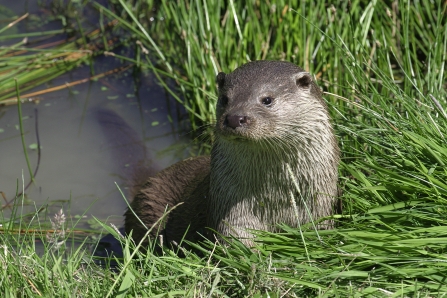Mill Bottom. Photo, Simon Williams
Mill Bottom
Location
Know before you go
Dogs
When to visit
Opening times
Prior permission required for access.Best time to visit
January for snowdrops, April - June for orchids, bluebells & woodland birdsAbout the reserve
Mill Bottom has a closed-in feel; ancient granite boulders hide amongst the trees and the rocks' cracks create the perfect spot for local bats to hang out in.
This nature reserve offers a chance to explore a secretive woodland on the edge of Dartmoor. Access is across a neighbouring property. Prior access permission from Devon Wildlife Trust must be sought.
Ash dieback
The disease ash dieback is now widespread in the UK and is present at many of our nature reserves, so we carry out tree felling across our sites in winter months. For your own safety please observe temporary path diversions and closures.
Where possible we will leave affected ash trees in place to decay naturally as an important habitat for wildlife. We plan to only fell diseased ash trees which pose a threat to people or infrastructure. Before trees are felled, we will check whether any rare or protected wildlife is present. If it is, we will postpone or avoid felling these trees. No felling will take place during the bird nesting season.
DWT’s Saving Devon’s Treescapes project are working with communities, landowners and businesses to help make Devon's precious treescapes more resilient in the face of ash dieback. Find out how you can get involved here.
NOTICE: If you are visiting our reserves, please note that there have been instances of H5N1 Avian bird flu found in birds in Devon. There is very low risk to public health, but we do ask that if you come across any unusual or unexplained bird deaths on or near our reserves, please do not touch them and avoid allowing your dog to come into contact with dead birds. Please report them to Defra here or call 03459 335577 and also report your findings to DWT by email at contactus@devonwildlifetrust.org.
Species
Habitat
Contact us
Location map

Otter
Once inside the reserve you'll be walking beneath a dense canopy of ash, hazel, holly, hawthorn and spindle. More than 100 kinds of flowering plant have been recorded here. Snowdrops and bluebells are part of this long list.
Making tracks with badgers and foxes
The Wray Brook runs along one side of the reserve. Otters often use this section to search for food, as do herons. Inside the woodland there are lots of badger tracks. This is also a good place to see foxes.
Going further from Mill Bottom
The nature reserve sits at the centre of Lustleigh, a classic Devon village on the edges of Dartmoor. A pub and shop make it a great base to discover the area. A good network of paths make for excellent walking.
The Wray Valley Trail passes close to Mill Bottom nature reserve, providing cyclists, walkers and horseriders a link to Devon Wildlife Trust's Bovey Heathfield and Teigngrace Meadow nature reserves.

